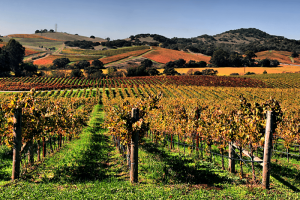
Embark on a journey through the best heritage tourism destinations of 2025, where rich cultural experiences await travelers seeking a deeper connection to history and tradition. Discover the allure of spiritual journeys, remote destinations, and iconic luxury train rides that promise unforgettable experiences.
Spiritual Journeys
Spiritual journeys in tourism involve traveling to destinations with significant spiritual or religious importance to seek enlightenment, inner peace, and a deeper connection to oneself and the world around them. These journeys often involve visiting sacred sites, participating in rituals, meditation, and reflection.
Popular Spiritual Destinations
- Varanasi, India: Known as the spiritual capital of India, Varanasi is a sacred city on the banks of the Ganges River where Hindu pilgrims come to bathe in the holy waters.
- Jerusalem, Israel: A holy city for Judaism, Christianity, and Islam, Jerusalem is home to religious sites like the Western Wall, Church of the Holy Sepulchre, and the Dome of the Rock.
- Machu Picchu, Peru: This ancient Incan citadel nestled in the Andes Mountains is considered a spiritual destination for its stunning natural beauty and mystical energy.
- Kyoto, Japan: With numerous temples, shrines, and Zen gardens, Kyoto offers a serene and spiritual atmosphere for visitors seeking inner peace.
Impact on Personal Growth and Well-being
Spiritual journeys can have a profound impact on personal growth and well-being. By immersing oneself in the spiritual practices and traditions of different cultures, individuals can gain a deeper understanding of themselves, their beliefs, and the world. These experiences often lead to increased mindfulness, inner peace, and a sense of connection to something greater than oneself. Overall, spiritual journeys can be transformative, offering a path to self-discovery and spiritual enlightenment.
Remote Destinations

Remote destinations hold a special appeal for travelers looking to escape the crowds and immerse themselves in untouched natural beauty. The allure of these remote areas lies in their pristine landscapes, unique cultures, and the sense of adventure they offer to visitors.
Benefits of Traveling to Remote Areas
Traveling to remote destinations provides a sense of tranquility and a break from the hustle and bustle of city life. It allows travelers to connect with nature on a deeper level and experience a sense of peace and serenity that is hard to find in more popular tourist spots. Additionally, visiting remote areas offers a chance to interact with local communities and learn about their traditions and way of life, providing a richer cultural experience.
- Opportunity for Authentic Experiences: Remote destinations often offer more authentic cultural experiences, allowing travelers to immerse themselves in the local way of life without the influence of mass tourism.
- Connection with Nature: Traveling to remote areas provides a unique opportunity to connect with nature and appreciate the beauty of untouched landscapes, from pristine beaches to rugged mountains.
- Sense of Adventure: Exploring remote destinations can be a thrilling and adventurous experience, with opportunities for activities such as hiking, wildlife spotting, and off-the-beaten-path exploration.
Visiting Remote Destinations vs Popular Tourist Spots
Visiting remote destinations offers a stark contrast to the experience of popular tourist spots. While popular destinations may offer convenience and amenities, remote areas provide a sense of exclusivity and a chance to escape the crowds. Traveling to remote destinations allows for a more intimate and authentic travel experience, away from the tourist traps and commercialization often found in popular spots.
- Less Crowds: Remote destinations are less crowded, allowing travelers to enjoy a more peaceful and relaxed experience without the hustle and bustle of popular tourist spots.
- Untouched Beauty: Remote areas often boast untouched natural beauty, providing a sense of awe and wonder that is hard to find in more developed and touristy locations.
- Cultural Immersion: Visiting remote destinations offers a deeper cultural immersion, as travelers have the opportunity to interact with local communities and learn about their traditions in a more authentic setting.
Theme Park Vacations
Theme parks have evolved significantly over the years, transforming from simple amusement parks to complex entertainment destinations catering to a wide range of visitors. These attractions offer a mix of thrilling rides, immersive experiences, and themed environments that appeal to people of all ages.
Evolution of Theme Parks
Theme parks have come a long way since their inception, with advancements in technology and storytelling playing a crucial role in their development. From the first Disneyland in California to the rise of mega-resort parks like Universal Studios and Disney World, these destinations continue to push the boundaries of entertainment.
Appeal Across Age Groups
Children
Theme parks are a paradise for kids, offering a variety of rides, characters, and shows tailored to their interests. The magic and wonder of these parks create lasting memories for young visitors.
Teens
Thrill-seeking teenagers are drawn to the adrenaline-pumping roller coasters and interactive experiences found in modern theme parks. The social aspect of visiting these attractions with friends also adds to the appeal.
Adults
For adults, theme parks provide a nostalgic escape to their childhood memories while also offering sophisticated attractions, dining options, and entertainment suitable for a more mature audience.
Future Trends in Theme Park Offerings
- Immersive Experiences: Theme parks will continue to invest in immersive storytelling techniques, blurring the lines between reality and fantasy.
- Technology Integration: Virtual and augmented reality will play a more prominent role in enhancing rides and attractions, providing visitors with unique and interactive experiences.
- Sustainability Initiatives: Theme parks will focus on eco-friendly practices, incorporating renewable energy sources, reducing waste, and promoting conservation efforts.
- Personalization: Customized experiences, such as personalized ride experiences and tailored entertainment options, will become more prevalent to cater to individual preferences.
- Cross-Promotional Partnerships: Theme parks will collaborate with popular franchises, brands, and entertainment properties to create new and exciting attractions based on beloved intellectual properties.
Private Jet Travel

Private jet travel offers a luxurious and convenient way to reach your destination, providing a level of comfort and exclusivity that commercial airlines may not offer. With private jet travel, passengers can enjoy personalized service, flexibility in scheduling, and privacy throughout their journey.When comparing private jet travel with commercial airline experiences, one of the main advantages is the ability to avoid the hassle of crowded airports and long security lines.
Private jets also offer direct flights to remote destinations that may not be easily accessible by commercial airlines. Additionally, passengers have the freedom to customize their travel experience, from choosing their preferred aircraft to onboard amenities.However, it is essential to consider the environmental impact of private jet travel in the context of sustainable tourism. Private jets emit a higher amount of carbon dioxide per passenger compared to commercial airlines, contributing to greenhouse gas emissions and climate change.
As such, it is important for travelers to consider the environmental consequences of their transportation choices and explore ways to minimize their carbon footprint, such as offsetting emissions or opting for more fuel-efficient aircraft.
Environmental Impact
When it comes to the environmental impact of private jet travel, it is crucial to acknowledge the higher carbon footprint associated with this mode of transportation. Private jets emit more carbon dioxide per passenger than commercial airlines, contributing to climate change and environmental degradation. As travelers continue to prioritize sustainability in their tourism choices, it is essential for the private aviation industry to explore ways to reduce emissions and promote more eco-friendly practices.
This could include investing in alternative fuels, adopting more efficient flight routes, and implementing carbon offset programs to mitigate the environmental impact of private jet travel.
Luxury Train Journeys
Luxury train journeys offer a unique and opulent travel experience that combines comfort, elegance, and a touch of old-world charm. These journeys attract tourists who appreciate luxury travel and want to explore destinations in a sophisticated and leisurely manner.
Iconic Luxury Train Journeys
- The Orient Express: Known for its luxurious cabins, gourmet dining, and iconic routes across Europe, the Orient Express is a symbol of luxury train travel.
- The Maharajas’ Express: In India, the Maharajas’ Express takes passengers on a royal journey through the country’s cultural and historical landmarks, offering unparalleled luxury onboard.
- The Blue Train: South Africa’s Blue Train is renowned for its impeccable service, stunning views of the landscape, and lavish accommodations, providing a unique way to experience the country.
Cultural and Historical Significance
Luxury train travel has a deep-rooted cultural and historical significance in heritage tourism. These trains often follow historic routes that were once used by royalty, dignitaries, and elite travelers. The opulence and elegance of luxury train journeys harken back to a bygone era of travel, where every detail was meticulously crafted to provide a truly unforgettable experience. Additionally, these journeys allow tourists to immerse themselves in the rich heritage and traditions of the destinations they visit, offering a unique perspective on the history and culture of the regions traversed.
Agricultural Tourism
Agricultural tourism, also known as agri-tourism, is a type of tourism that involves visiting working farms, ranches, or agricultural areas for educational and recreational purposes. This form of tourism allows travelers to experience firsthand the agricultural way of life, participate in farm activities, and learn about the production of crops and livestock.
It provides a unique opportunity for visitors to connect with nature, learn about sustainable farming practices, and support local farmers and communities.
Popular Agricultural Tourism Destinations and Activities
Agricultural tourism destinations can be found all around the world, offering a wide range of activities for travelers to enjoy. Some popular examples include:
- Wine Tours in Napa Valley, California: Visitors can tour vineyards, taste different wines, and learn about the winemaking process.
- Lavender Farms in Provence, France: Travelers can explore fields of fragrant lavender, participate in harvesting, and purchase handmade lavender products.
- Coffee Plantations in Costa Rica: Tourists can observe coffee cultivation, processing, and roasting, as well as taste freshly brewed coffee.
- Fruit Orchards in Japan: Visitors can pick seasonal fruits, such as strawberries and peaches, directly from the trees and enjoy farm-to-table dining experiences.
Sustainable practices play a crucial role in agricultural tourism experiences, ensuring the preservation of natural resources, the protection of the environment, and the promotion of responsible tourism.
Role of Sustainable Practices in Agricultural Tourism Experiences
Sustainable practices in agricultural tourism focus on minimizing the negative impact of tourism activities on the environment, while also benefiting local communities and economies. Some key aspects include:
- Organic Farming: Encouraging the use of organic farming methods, such as crop rotation, composting, and natural pest control, to promote soil health and biodiversity.
- Water Conservation: Implementing water-saving techniques, such as drip irrigation and rainwater harvesting, to reduce water usage and preserve water resources.
- Community Engagement: Involving local communities in tourism activities, providing opportunities for cultural exchange, and supporting small-scale farmers and artisans.
- Education and Awareness: Offering educational programs, workshops, and farm tours to raise awareness about sustainable agriculture, food production, and environmental conservation.
Cycling Tours
Cycling tours have become increasingly popular in heritage tourism, offering travelers a unique way to explore historical sites and cultural landmarks while staying active and engaging with the environment.
Tips for Planning a Successful Cycling Tour in a Heritage Destination
- Research the route beforehand to ensure it aligns with your fitness level and interests.
- Check the weather conditions and pack appropriate gear for a comfortable ride.
- Consider renting a bike locally or bringing your own to ensure a suitable fit.
- Plan rest stops along the way to take in the surroundings and refuel with local cuisine.
- Respect the heritage sites by following designated biking paths and guidelines.
Health and Environmental Benefits of Cycling Tours
- Cycling tours promote physical activity and cardiovascular health, providing a fun way to stay fit while on vacation.
- By choosing cycling over motorized transportation, travelers reduce their carbon footprint and contribute to sustainable tourism practices.
- Exploring heritage destinations on a bike allows for a closer connection to the surrounding nature and cultural heritage, enhancing the overall travel experience.
Wine and Vineyard Tours
Wine and vineyard tours offer a unique and immersive experience for wine enthusiasts, allowing them to explore the world of winemaking firsthand. These tours provide the opportunity to learn about the winemaking process, taste a variety of wines, and appreciate the beauty of vineyard landscapes.
Appeal of Wine and Vineyard Tours
Wine and vineyard tours appeal to wine enthusiasts who are eager to deepen their knowledge and appreciation of wine. By visiting vineyards, participants can witness the entire winemaking process from grape to bottle, gaining a greater understanding of the craftsmanship and dedication involved in producing high-quality wines.
Unique Experiences Offered
- Guided tours of vineyards and wineries, with the opportunity to interact with winemakers and learn about different grape varieties.
- Wine tasting sessions where participants can sample a range of wines and develop their palate.
- Picnics or meals overlooking picturesque vineyard landscapes, creating a serene and memorable dining experience.
- Hands-on activities such as grape stomping or blending workshops, allowing visitors to engage in the winemaking process.
Economic Impact on Local Communities
Wine and vineyard tourism can have a significant economic impact on local communities by stimulating the growth of the wine industry and supporting small businesses. Tourists who participate in wine tours often purchase bottles of wine to take home, providing a direct source of revenue for local wineries. Additionally, the influx of visitors can boost tourism-related businesses such as restaurants, hotels, and transportation services, contributing to the overall economic development of the region.
Heritage Tourism
Heritage tourism involves visiting historical sites, cultural landmarks, and other places of significance to learn about the past and preserve cultural legacies. It plays a crucial role in promoting understanding and appreciation of different cultures and traditions.
Examples of Successful Heritage Tourism Initiatives
- The Great Wall of China: A UNESCO World Heritage Site attracting millions of visitors annually.
- Machu Picchu, Peru: An ancient Incan city that showcases the rich history of the region.
- The Acropolis, Greece: A symbol of ancient Greek civilization and a popular tourist destination.
Challenges and Opportunities in Promoting Heritage Tourism Destinations
- Challenges:
- Over-tourism leading to environmental degradation and cultural erosion.
- Preservation of historical sites against natural disasters and human activities.
- Ensuring local communities benefit from tourism without exploitation.
- Opportunities:
- Creating sustainable tourism practices to protect heritage sites for future generations.
- Collaborating with local communities to offer authentic cultural experiences.
- Utilizing technology for virtual tours and interactive exhibits to enhance visitor engagement.
City Breaks
City breaks are short trips taken by tourists to urban destinations, allowing them to explore the culture, history, and attractions of a city within a limited timeframe. These trips are popular among travelers looking for a quick getaway or a weekend escape to experience the vibrancy and diversity of city life.
Maximizing a Short City Break Trip
- Plan ahead and prioritize attractions you want to visit.
- Opt for centrally located accommodation to save time on commuting.
- Take advantage of public transportation or walking tours to explore the city efficiently.
- Sample local cuisine and immerse yourself in the culinary scene of the city.
- Be flexible and open to spontaneous discoveries while exploring the city.
Experiences in Different Types of Destinations
City breaks can offer diverse experiences based on the type of destination you choose to visit:
| Historical Destinations | Modern Destinations | Cultural Destinations |
|---|---|---|
| Explore ancient ruins, historical landmarks, and museums showcasing the city’s rich past. | Experience futuristic architecture, innovative technology, and contemporary art scenes. | Immerse yourself in local traditions, art, music, and festivals that define the city’s culture. |
Ending Remarks
As we delve into the realm of Best heritage tourism destinations 2025, it becomes evident that the future of travel lies in exploring the roots of our past. From immersive theme park vacations to sustainable agricultural tours, the preservation of cultural legacies takes center stage in shaping unforgettable travel experiences.
Essential FAQs
What makes heritage tourism destinations unique?
Heritage tourism destinations offer a glimpse into the cultural history and traditions of a particular region, providing enriching experiences for travelers.
How can travelers benefit from visiting remote destinations?
Traveling to remote destinations allows tourists to escape the crowds, immerse themselves in pristine natural landscapes, and experience authentic local cultures.
Why are cycling tours becoming popular in heritage tourism?
Cycling tours offer a unique way to explore heritage sites at a leisurely pace, promoting sustainable travel practices and providing a deeper connection to the surroundings.






